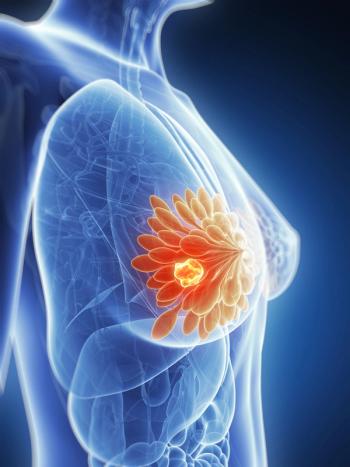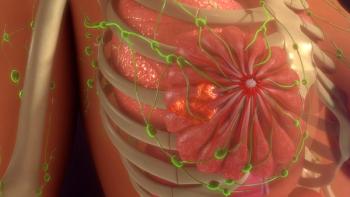
- Oncology Vol 28 No 1S
- Volume 28
- Issue 1S
(P057) Acute-Phase Response Before Treatment Predicts Radiation Esophagitis in Non–Small-Cell Lung Cancer
Radiation esophagitis (RE) represents an inflammatory reaction to radiation therapy (RT). We hypothesized that aspects of the physiologic acute-phase response (APR), specifically increased platelet and decreased hemoglobin levels, predict RE.
Chad Tang, MD, Zhongxing Liao, MD, Yan Zhuang, MD, Lawrence Levy, MS, Chun Hung, BS, Xiaodong Li, MD, Shane Krafft, MS, Mary Martel, PhD, Daniel Gomez, MD, Ritsuko Komaki, MD; UT MD Anderson Cancer Center
Background and Purpose: Radiation esophagitis (RE) represents an inflammatory reaction to radiation therapy (RT). We hypothesized that aspects of the physiologic acute-phase response (APR), specifically increased platelet and decreased hemoglobin levels, predict RE.
Materials and Methods: We retrospectively analyzed 285 patients with non–small-cell lung cancer treated with definitive radiation. The primary analysis was the association of pre-RT lab values with symptomatic (grade ≥ 2) RE. Univariate and stepwise multivariate odds ratios (ORs) were calculated to test associations of clinical and pretreatment lab values with RE. Optimal cutpoints for individual variables and multivariable RE risk stratification groupings were determined via recursive portioning analysis (RPA).
Results: Pretreatment platelet counts were higher and hemoglobin levels were lower in patients who developed RE (P < .05), findings consistent with the APR. Based on these two pretreatment risk factors-high platelets and low hemoglobin-an APR score was defined as 0 (no risk factors), 1 (either risk factor), or 2 (both risk factors). A 1-point increase in APR score was significantly associated with RE in both univariate (OR = 2.3; P = .001) and multivariate (OR = 2.1; P = .002) analyses. Other variables identified on multivariate analysis to be significantly associated with RE include concurrent chemotherapy use (OR = 2.5; P = .008), in addition to mean (OR = 2.3; P = .0004) and max (OR = 2.4; P = .009) esophageal doses. RPA-based RE risk stratification produced three risk groups based on APR score, chemotherapy use, and dosimetric parameters.
Conclusions: Patients exhibiting aspects of the APR prior to RT initiation were more prone to RE development. The APR score may represent a novel metric to predict for RE. We propose a multivariate algorithm incorporating this score.
Articles in this issue
Newsletter
Stay up to date on recent advances in the multidisciplinary approach to cancer.





















































































